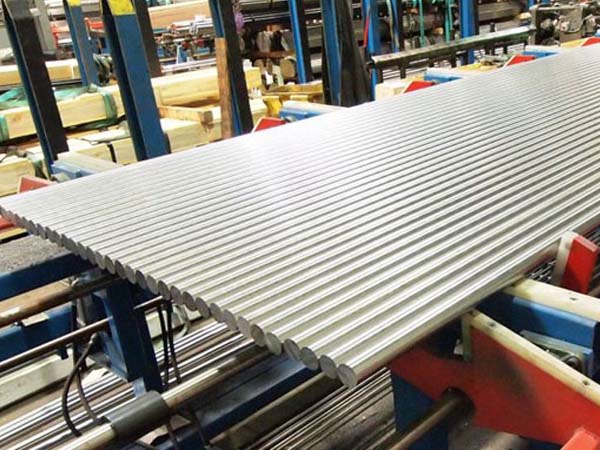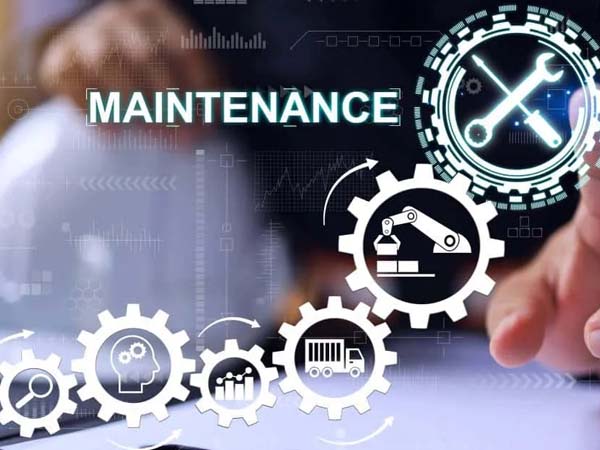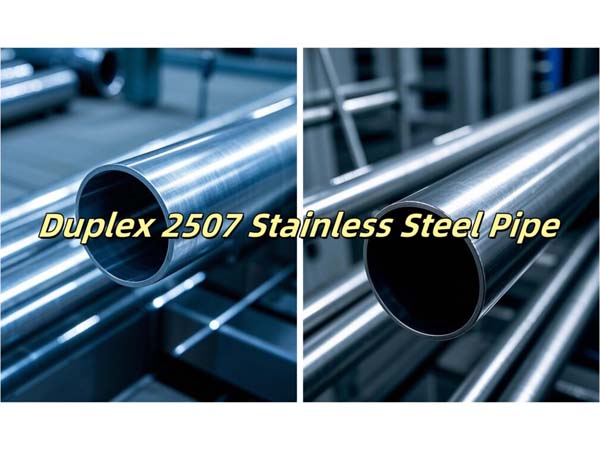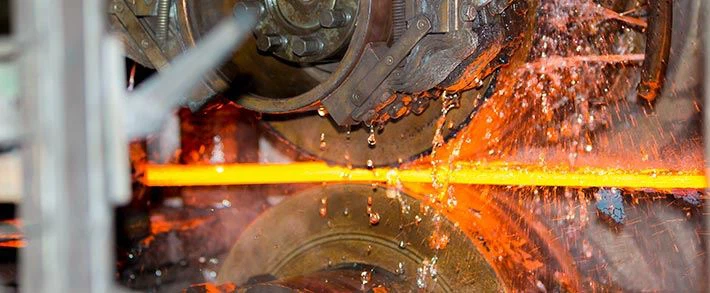





Phone
+86-731-82250427
Address
25th floor, C3 Building, Wanda Plaza, Kaifu District, Changsha, Hunan Province, China.
 May 24 2023
May 24 2023
Hot Rolled Steel
Hot rolled steel is a steel that is heated and rolled at high temperatures. Its strength is not very high, but it is sufficient for our use. Its plasticity and weldability are better, so we are more commonly used. After the steel is strongly drawn beyond the strain hardening stage, its strength is high, but its toughness and weldability are poor, and it is relatively hard and brittle. Hot rolling is processed at high temperatures. Hot rolling means that the material needs to be heated during or before the steel rolling. It is generally heated to above the recrystallization temperature before rolling.
 Process:
Process:
Ironmaking→Steelmaking→Continuous casting (or die casting)→Hot rolling (hot rolled products)→Cold rolling (cold-rolled products)
Continuous hot-dipping of hot-rolled steel strip is a brand-new process for the production of hot-dip galvanized sheet. The application of this process greatly improves the efficiency of steel strip production and is of great significance for ensuring the quality of the steel strip. The continuous hot-dip galvanizing of hot-rolled steel strips was produced in Japan in the 1970s. This technology is an important innovation to improve the production technology of steel strips. Under the background that people have increasingly high requirements for the quality of hot-dip galvanized sheets, strengthen hot-rolled steel Research on continuous hot-dip galvanizing technology has become an inevitable choice for iron and steel enterprises.
In the decades of development, the continuous hot-dip galvanizing production technology of hot-rolled steel strips has developed to varying degrees, but it has also accumulated a lot of problems. The solution to these problems is to improve the technical level of hot-pressed steel strip continuous hot-dip galvanizing production. inevitable choice. In the increasingly fierce competition in the steel strip market, if steel companies want to achieve their long-term development, they must strengthen the research on the production technology of continuous hot-dip galvanizing of hot-rolled steel strips, and realize the innovation of continuous hot-dip galvanizing of hot-rolled steel strips.
Features of hot-rolled products: Hot-rolled products have excellent properties such as high strength, good toughness, easy processing, and good weldability, etc., so they are widely used in manufacturing industries such as ships, automobiles, bridges, construction, machinery, pressure vessels, etc.
Hot rolled steel can often be identified by the following characteristics:
• Scaled surfaces, the remnants of cooling from extreme temperatures.
• Slightly rounded edges and corners for bar and plate products (due to shrinkage and less precise finishing).
• Slight distortions, where cooling may leave slightly trapezoidal forms rather than perfectly squared angles.
Cold Rolled Steel
Cold rolling (zhá) is made of hot-rolled coils as raw materials and rolled at room temperature below the recrystallization temperature. Cold-rolled steel plates are steel plates produced through the cold rolling process, referred to as cold plates. The thickness of the cold-rolled sheet is generally between 0.1 and 8.0mm. The thickness of the cold-rolled steel sheet produced by most factories is less than 4.5mm. The thickness and width of the cold-rolled sheet are determined according to the equipment capacity and market demand of each factory.

But the term “rolled” is often used to describe a range of finishing processes such as turning, grinding, and polishing, each of which modifies existing hot rolled stock into more refined products. Technically, “cold rolled” applies only to sheets that undergo compression between rollers. But forms like bars or tubes are “drawn,” not rolled. So hot-rolled bars and tubes once cooled, are processed into what are called “cold finished” tubes and bars.
Cold rolled steel can often be identified by the following characteristics:
• More finished surfaces with closer tolerances.
• Smooth surfaces that are often oily to the touch.
• Bars are true and square and often have well-defined edges and corners.
• Tubes have better concentric uniformity and straightness. Hot Rolled Steel
Product features:
Because it has not been annealed, its hardness is very high (HRB is greater than 90), and its mechanical processing performance is extremely poor.
Hot Rolled VS Cold Rolled Steel:
To put it simply, cold rolling is processed and rolled on the basis of hot-rolled coils. Generally speaking, it is a process of hot rolling---pickling---cold rolling.
Cold rolling is processed from a hot-rolled sheet at room temperature. Although the steel sheet will be heated during rolling because of rolling, it is still called cold rolling. Because the hot-rolled cold-rolled through continuous cold deformation, the mechanical properties are relatively poor, and the hardness is too high. It must be annealed to restore its mechanical properties. Those without annealing are called rolled hard coils. Rolled hard coil is generally used to make products without bending and stretching.
